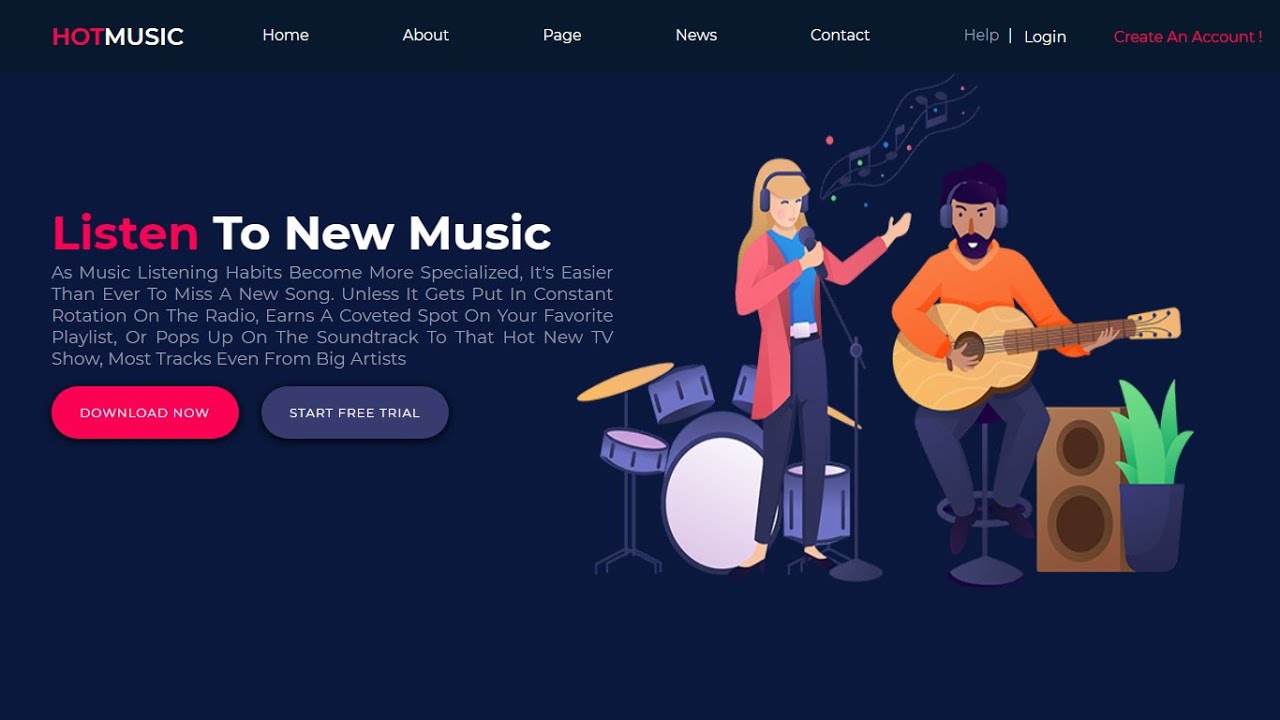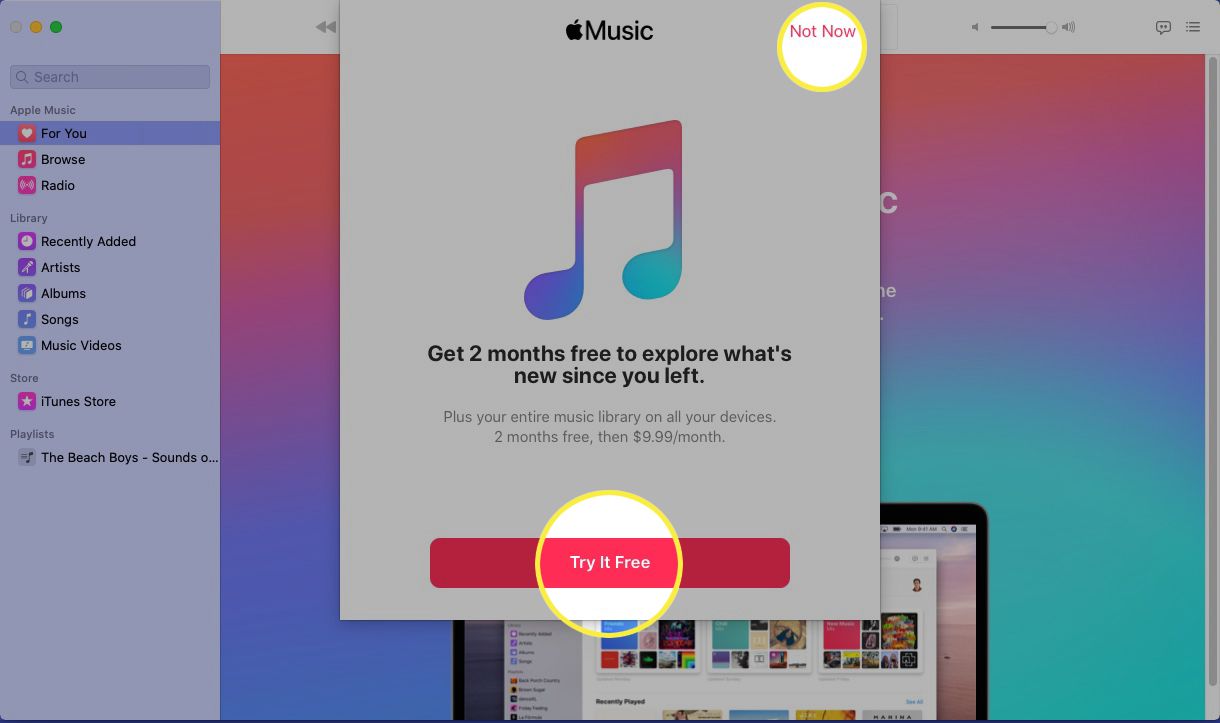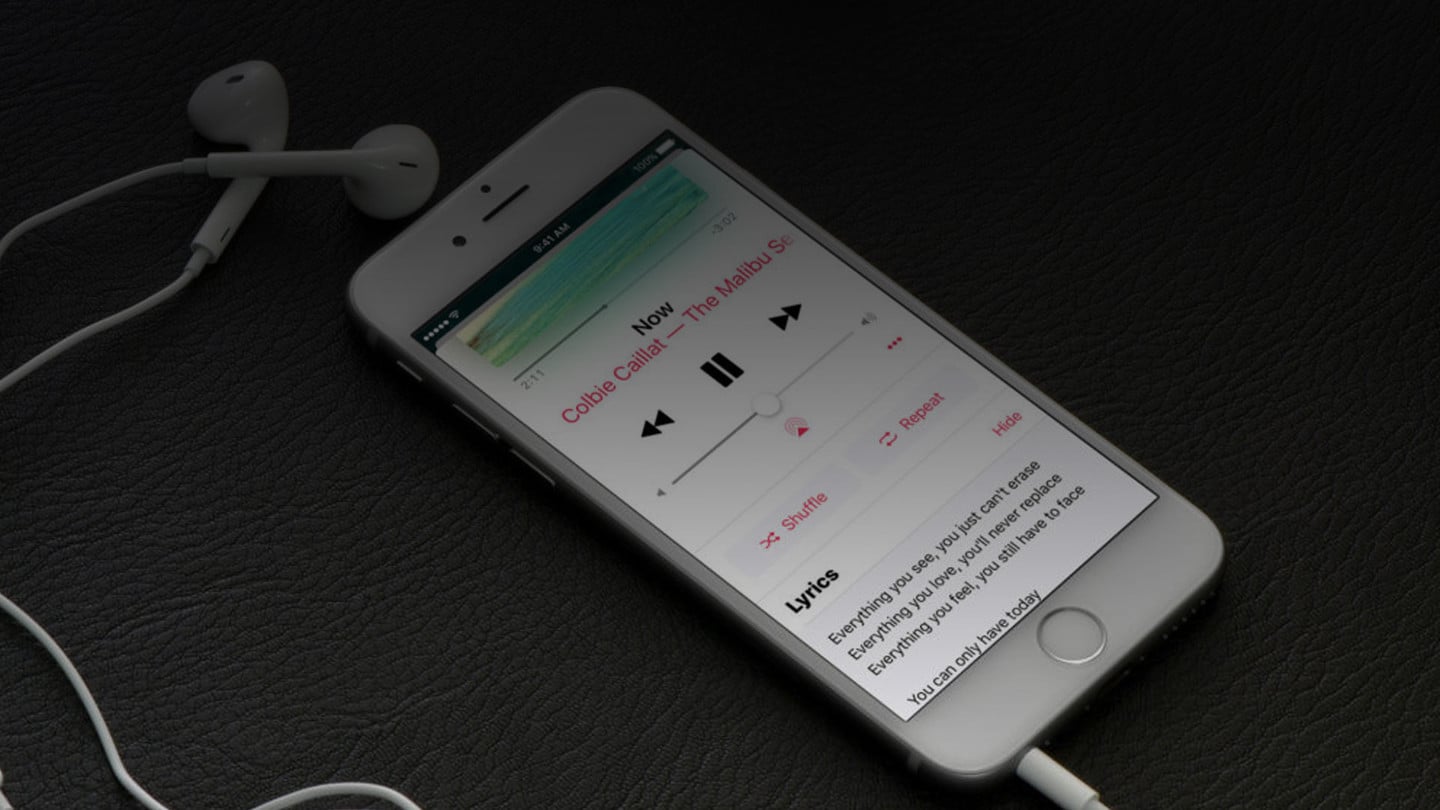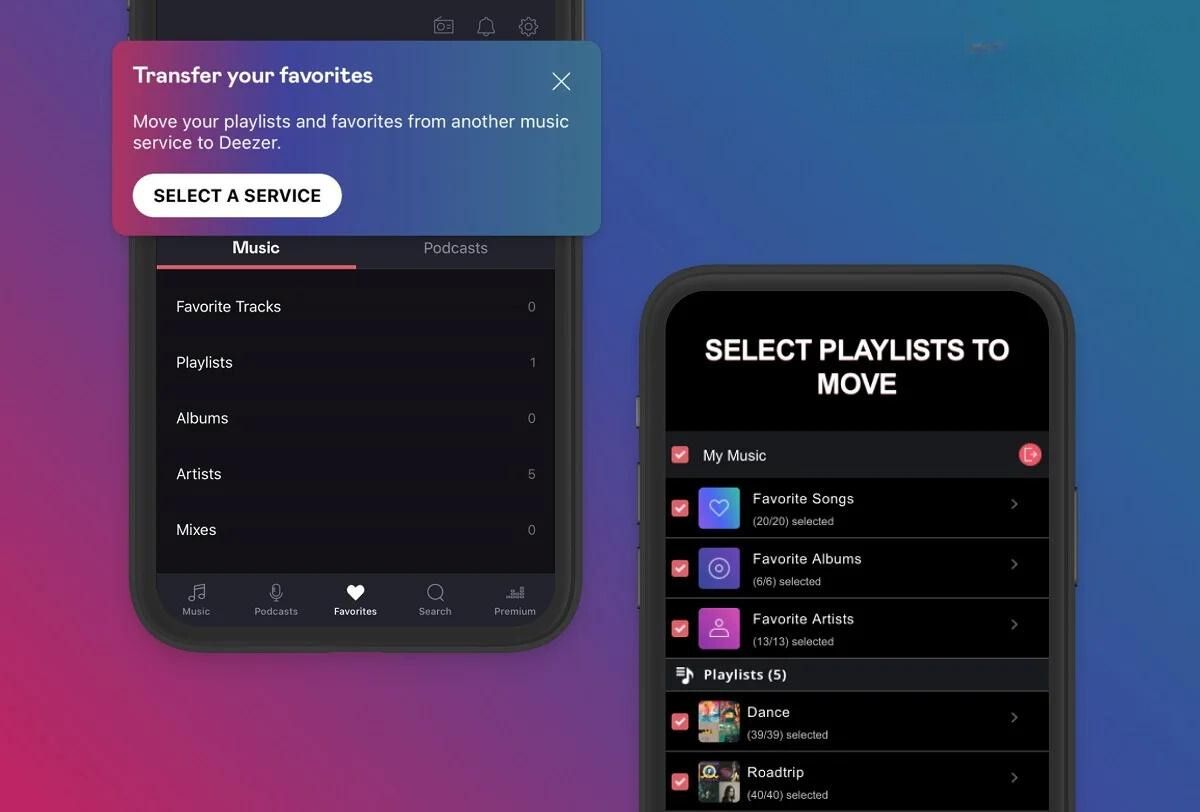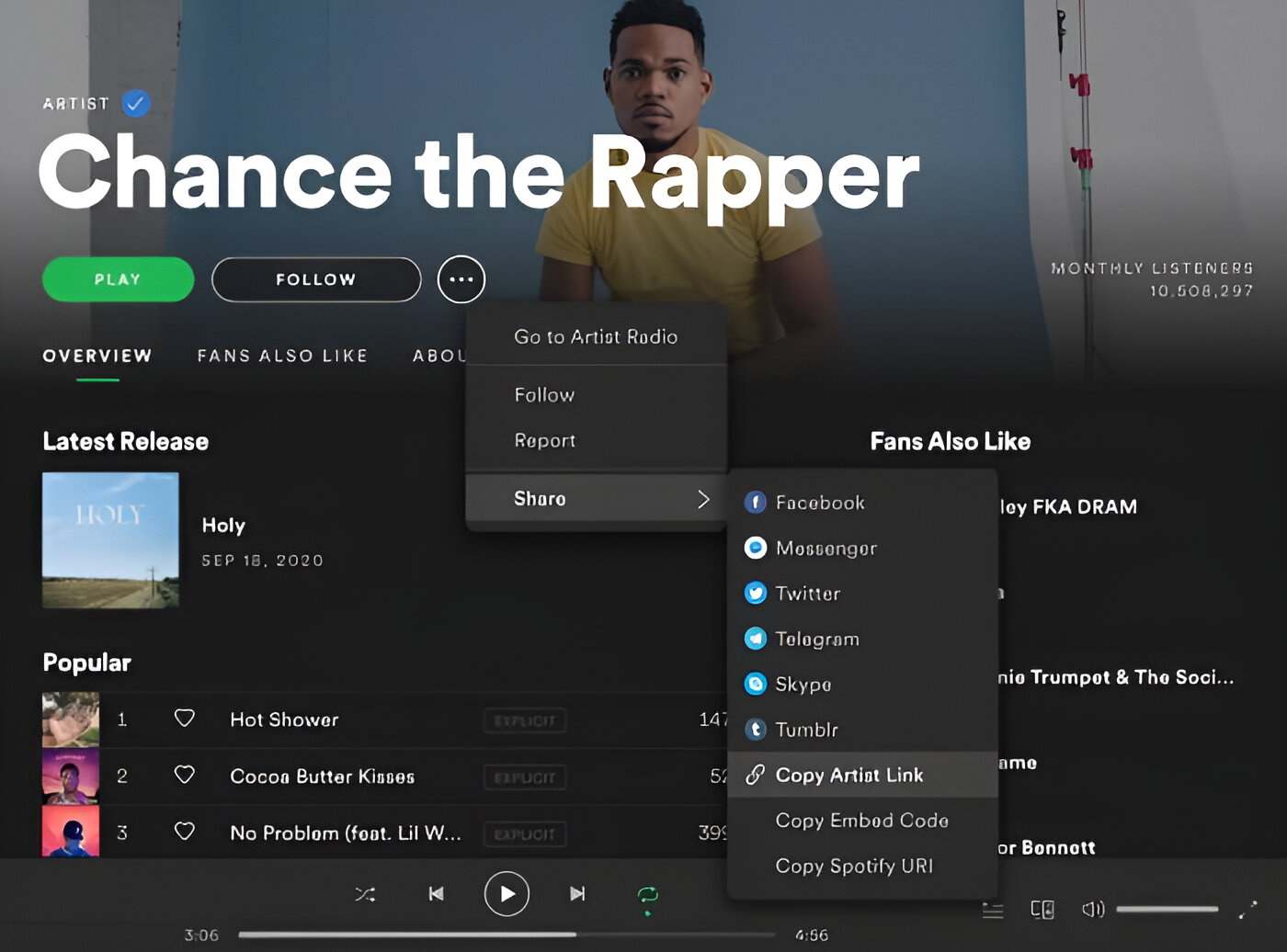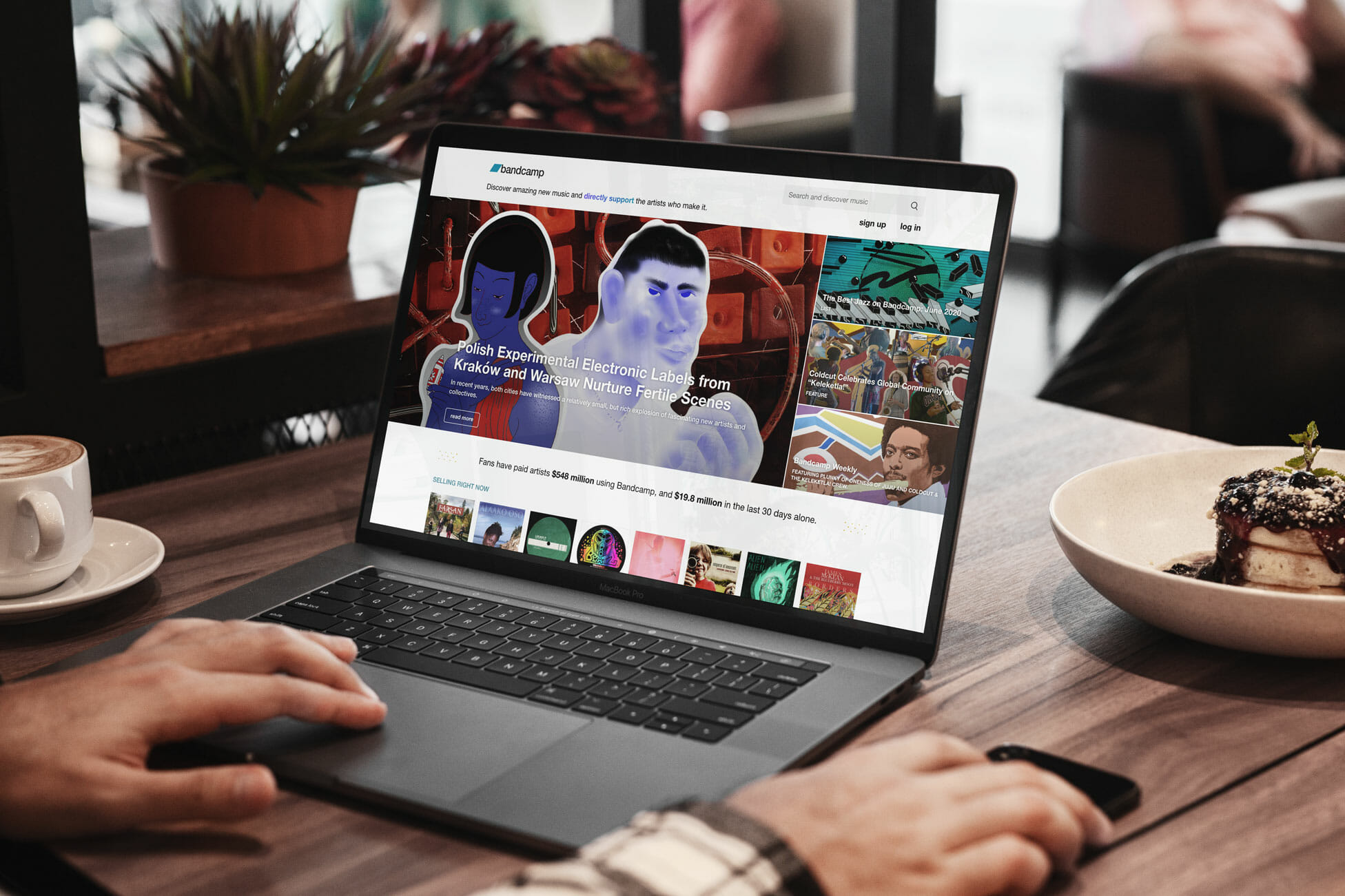Introduction
Welcome to the digital age, where music downloading has become an integral part of our daily lives. If you’re passionate about music and want to create a website for music downloads, you’ve come to the right place. In this guide, we will provide you with step-by-step instructions on how to create a website that enables music enthusiasts to discover and download their favorite tunes.
The internet has revolutionized the way we consume music, allowing artists to connect directly with their fans and share their creations worldwide. By creating a website for music downloads, you can build an online platform that not only promotes your favorite artists but also provides a convenient and enjoyable experience for music lovers.
Before diving into the technical aspects of building a website for music downloads, it’s important to have a clear vision of your goals. Are you looking to create a platform for independent artists to showcase their music? Or are you aiming to curate a collection of the best releases from around the world? Understanding your objectives will help you make informed decisions throughout the website creation process.
In this guide, we will cover everything from choosing a website builder to optimizing your site for search engines and promoting it to grow your audience. Whether you’re a music blogger, a record label, or a passionate music fan, this guide will equip you with the knowledge and tools necessary to create a successful music download website.
Before we get started, remember that creating a website for music downloads requires careful planning and attention to detail. It’s crucial to ensure that you have the necessary rights and permissions to distribute the music you offer on your website. Always respect copyright laws and consider obtaining licenses from the appropriate authorities or working with artists and labels directly.
Now that we have set the groundwork, let’s dive into the step-by-step process of creating a website for music downloads. Follow along, and soon enough, you’ll have a beautifully designed platform where users can discover, download, and appreciate the power of music.
Step 1: Choose a Website Builder
The first step in creating a website for music downloads is selecting a website builder. A website builder is a user-friendly platform that allows you to design and build your website without any coding knowledge. With a wide range of website builders available, it’s important to choose one that meets your specific needs.
When choosing a website builder for your music download website, consider factors such as ease of use, design flexibility, and functionality. You’ll want a platform that allows you to customize the look and feel of your website, as well as add features necessary for music downloads.
One popular website builder that is highly recommended for music-related websites is WordPress. WordPress is a powerful and flexible platform that offers a variety of themes and plugins specifically designed for music websites. It provides a user-friendly interface, making it easy for anyone to create a professional-looking website.
If you prefer a drag-and-drop interface, Wix and Weebly are excellent options. These website builders have intuitive editors that allow you to simply drag and drop elements onto your website. They also offer a wide selection of music-related templates to choose from, helping you create a visually appealing website in no time.
Another option to consider is Squarespace, known for its stunning designs and sleek layouts. Squarespace offers beautiful templates that are mobile-responsive, ensuring that your website looks great on any device. Additionally, it provides built-in features for selling and downloading music, making it an ideal choice for music download websites.
When selecting a website builder, take the time to explore the various options available. Consider your needs and preferences, as well as the scalability of the platform. You want a website builder that can grow with your music download website as it gains popularity.
Remember, choosing a website builder is just the first step. Once you’ve selected a platform, you’ll need to register a domain name and choose a web hosting provider. These factors will be covered in the next steps.
Now that you have a clear understanding of the importance of choosing the right website builder, let’s move on to step two: registering a domain name.
Step 2: Register a Domain Name
Registering a domain name is a crucial step in creating your music download website. A domain name is the address that users will type into their browser to access your website (e.g., www.yourmusicdownloadwebsite.com). It’s important to choose a domain name that is catchy, easy to remember, and relevant to your website’s purpose.
When selecting a domain name, consider incorporating keywords related to music downloads to improve your website’s visibility in search engine results. This will help potential users find your website more easily when searching for music to download.
There are numerous domain registrars where you can register your desired domain name. Popular choices include GoDaddy, Namecheap, and Google Domains. These registrars offer easy-to-use search tools to check the availability of your desired domain name and facilitate the registration process.
While registering a domain name, it’s advisable to choose a reputable top-level domain (TLD) extension, such as .com or .net. These extensions are more widely recognized and trusted by users. However, if you’re targeting a specific geographical audience, consider using a country-specific TLD (e.g., .uk for the United Kingdom or .de for Germany).
When registering your domain name, you’ll typically have the option to purchase it for a specified period, usually one to ten years. It’s recommended to register your domain name for a longer duration to ensure it remains under your ownership and to avoid any potential issues in the future.
Once you’ve registered your domain name, you’ll need to connect it to your chosen website builder or web hosting provider. This step involves configuring the DNS settings to point your domain to the correct server. The exact process may vary depending on your registrar and website builder or hosting provider. Most registrars provide helpful documentation or customer support to guide you through this process.
Now that you’ve successfully registered a domain name, you’re one step closer to bringing your music download website to life. In the next step, we will discuss selecting a web hosting provider to ensure your website is accessible to users around the world.
Step 3: Choose a Web Hosting Provider
Choosing a reliable web hosting provider is essential for the success of your music download website. Web hosting is a service that stores your website’s files and makes them accessible to visitors on the internet. A fast and secure web hosting provider ensures that your website loads quickly and remains available at all times.
When selecting a web hosting provider, consider factors such as server reliability, speed, security, customer support, and scalability. You’ll want a hosting provider that can handle the traffic and bandwidth requirements of a music download website.
One popular option for hosting music download websites is Bluehost. Bluehost offers reliable hosting services with excellent performance and uptime. They provide one-click WordPress installation, making it easy to integrate your chosen website builder into their hosting environment.
If you’re looking for more advanced features and customization options, SiteGround is an excellent option. SiteGround offers solid uptime, fast loading times, and top-notch support. They also provide staging environments and automatic daily backups to ensure the safety and stability of your website.
Another reliable hosting provider is DreamHost. DreamHost offers a wide range of hosting plans, including managed WordPress hosting, which provides automatic updates and enhanced security features for your website. They also have a reputation for excellent customer support.
When comparing web hosting providers, it’s essential to consider the specific requirements of your music download website. Determine the amount of storage and bandwidth you’ll need to accommodate your website’s music files and ensure that the hosting provider can meet those requirements.
Additionally, take into account any specific features required for your website’s functionality. For example, if you plan on selling music downloads directly from your website, ensure that the hosting provider supports e-commerce functionality and secure payment processing.
Remember to check customer reviews and ratings to gauge the experiences of other users with the hosting provider. Look for feedback regarding speed, uptime, and customer support to make an informed decision.
Once you’ve chosen a web hosting provider, sign up for a hosting plan that suits your needs and budget. Follow the provider’s instructions to connect your domain name to the hosting account. With a reliable web hosting provider, your music download website will be ready to reach a global audience.
In the next step, we will discuss installing a content management system to effectively manage and organize your music download website.
Step 4: Install a Content Management System
Installing a content management system (CMS) is a crucial step in creating a music download website. A CMS enables you to efficiently manage and organize your website’s content, including music files, blog posts, and other multimedia elements.
One of the most popular CMS platforms for music websites is WordPress. Not only is WordPress user-friendly, but it also offers a wide range of themes and plugins specifically designed for music downloads. To install WordPress, you can often use a one-click installation option provided by your web hosting provider.
During the installation process, you’ll need to set up a username and password for your WordPress admin account. This account will grant you access to the backend of your website, where you can customize the design, add content, and manage your music files.
Once you’ve installed WordPress, you can select a theme that aligns with the look and feel you desire for your music download website. Consider choosing a theme that is responsive, visually appealing, and optimized for displaying music-related content.
In addition to themes, WordPress provides a vast library of plugins that can enhance the functionality of your website. Look for plugins that allow users to easily search and download music, create playlists, and provide a smooth user experience. Utilize plugins for implementing a music player, creating a user registration system, and setting up a secure download process.
If you prefer an alternative to WordPress, other CMS platforms offer music-related features. Joomla and Drupal are two popular choices that provide customization options and functionality suitable for music download websites. Explore these platforms to determine if they better meet your needs.
Once you’ve installed and customized your chosen CMS, it’s time to organize and upload your music files. Create relevant categories and tags to help users easily navigate and discover the music they’re looking for. Ensure that all files are properly named and organized for efficient management.
With a content management system in place, you have the foundation to effectively manage and present your music download website. In the next step, we will discuss how to customize your website’s design to create an engaging and visually appealing user experience.
Step 5: Customize Your Website’s Design
Customizing your website’s design is a vital step in creating a memorable and visually appealing music download website. A well-designed website enhances the user experience and helps you establish a strong brand presence in the online music community.
Start by selecting a theme or template that reflects the style and vibe you want to convey. WordPress and other CMS platforms offer a wide range of music-centric themes that can be easily customized to suit your preferences. Look for themes that have a responsive design, ensuring that your website looks great on all devices.
Once you’ve chosen a theme, customize its colors, fonts, and layout to create a cohesive and visually pleasing aesthetic. Consider incorporating elements related to music, such as album covers, musical notes, or instruments, to make the design more engaging and relevant to your content.
Remember to prioritize user-friendliness when customizing your website’s design. Ensure that the navigation is intuitive and easily accessible, allowing visitors to find and download music files with ease. Incorporate search functionality so users can quickly search for their favorite artists or songs.
Incorporating imagery and media into your website can enhance its appeal. Display high-quality album artwork, artist photos, and music videos to give visitors a rich and immersive experience. Utilize sliders or carousels to showcase featured music or latest releases prominently.
Another crucial aspect of customization is optimizing your website for mobile devices. The majority of internet users access websites through their smartphones or tablets, so it’s essential to ensure that your website is mobile-responsive. Test your website on different devices and screen sizes to ensure seamless navigation and usability.
Remember to maintain a consistent design throughout your website by using the same fonts, colors, and graphics across pages. Consistency not only makes your website look professional but also helps with brand recognition.
In addition to visual aspects, consider the overall user experience. Ensure that your website loads quickly by optimizing images and utilizing caching techniques. Implement clear calls-to-action, such as prominent download buttons, to encourage users to take action and download music.
Regularly update and maintain your website’s design to stay current with the latest design trends and technology advancements. Continuously seek feedback from users and make necessary improvements based on their suggestions and preferences.
By customizing your website’s design, you create a visually appealing and engaging platform that will draw in users and keep them coming back for more music downloads. In the next step, we will discuss how to upload and organize your music files effectively.
Step 6: Upload and Organize Music Files
Uploading and organizing your music files is a crucial step in creating a functional and user-friendly music download website. By efficiently managing your music library, you provide users with a seamless and enjoyable browsing experience.
Start by gathering all the music files you want to offer for download on your website. Make sure you have the necessary rights and permissions to distribute the music. If you’re working with independent artists or bands, seek their permission and ensure you follow any licensing agreements in place.
Once you have your music files ready, log in to your content management system (CMS) and navigate to the media library or file management section. This is where you’ll upload and organize your music files.
When uploading music files, consider compressing them to reduce the file size without compromising audio quality. This helps improve website loading speed and ensures a smooth user experience.
Organize your music library by creating relevant categories or genres. This will help users navigate your website and discover the music they’re interested in. You can also add tags, such as artist names, album titles, or release years, to make the search process more efficient and comprehensive.
Carefully name your music files to provide accurate and descriptive information. Include relevant details such as the artist name, song title, and track number. Clear and consistent naming conventions will not only help users find specific tracks but will also enhance search engine optimization (SEO) for your website.
In addition to the music files, it’s essential to provide additional information about each song or album. Write concise and engaging descriptions that capture the essence of the music. Include details such as artist biographies, song lyrics, and album reviews to give users a deeper understanding of the music they’re downloading.
Consider adding album artwork to enhance the visual appeal of your website. High-quality images that align with the genre or style of the music will create a more immersive experience for users. This can be done by adding the artwork to each individual song file or by creating a separate image file for each album.
Regularly update and expand your music library to keep your website fresh and enticing to users. Add new releases, curated playlists, or recommendations to ensure there is always something new and exciting for visitors to discover.
By uploading and organizing your music files effectively, you create a user-friendly platform that allows music enthusiasts to easily find and download their favorite songs. In the next step, we will discuss setting up a payment system for downloading music.
Step 7: Set Up a Payment System for Downloads
If you plan to offer paid music downloads on your website, setting up a payment system is essential. A secure and user-friendly payment system allows you to generate revenue from your music download website while providing a seamless purchasing experience for your users.
Start by choosing a payment gateway that supports digital downloads and integrates with your website builder or CMS. Popular payment gateways such as PayPal, Stripe, and Square offer easy integration options and provide reliable and secure payment processing.
Once you’ve selected a payment gateway, sign up for an account and configure the necessary settings, including linking your bank account for funds transfer. Ensure that you comply with any legal and tax requirements related to selling digital products in your jurisdiction.
Configure your website’s settings to enable paid downloads for specific music files or albums. This may involve associating a price or licensing agreement with each downloadable item in your music library. Determine whether you want to offer individual track downloads or bundle options such as full albums or curated playlists.
When setting prices for your downloads, consider factors such as production costs, market demand, and the value you are offering to your audience. Strike a balance between generating revenue and making your downloads affordable and attractive to potential customers.
Ensure that your payment system is secure and reliable to instill trust in your users. Implement SSL (Secure Sockets Layer) encryption to protect sensitive customer information during the payment process. Display trust seals or security badges from the payment gateway to reassure users that their transactions are safe.
Clearly communicate your payment options and policies to users. Display pricing information, accepted payment methods, and any refund or cancellation policies on your website. Make it easy for users to understand how to make a purchase and provide clear instructions on how to access their purchased downloads after completing a transaction.
Regularly monitor your payment system and address any issues promptly. Test the purchasing process from a user perspective to identify and resolve any potential obstacles or errors. Pay attention to customer feedback and be responsive to inquiries or concerns related to payments.
By setting up a secure and user-friendly payment system, you can monetize your music download website and provide a convenient way for users to support the artists they love. In the next step, we will discuss adding music player and download buttons to enhance the user experience.
Step 8: Add Music Player and Download Buttons
Adding a music player and download buttons to your website is crucial for providing a seamless and enjoyable user experience. These features allow visitors to listen to music samples and easily download their favorite tracks or albums from your music download website.
Start by selecting a music player plugin or widget that integrates with your chosen content management system (CMS). WordPress and other platforms offer a wide range of plugins specifically designed for music websites. Look for ones that provide customizable player designs, playlist creation options, and seamless integration with your music library.
Once you’ve chosen a music player plugin, install and configure it according to your preferences. Customize the player’s appearance to match your website’s design, ensuring a cohesive and visually appealing presentation. Consider adding features such as shuffle, repeat, and volume control to enhance user control over their listening experience.
Incorporate download buttons adjacent to each music track or album, allowing users to easily download the music files they desire. Make the buttons prominent and clearly labeled, informing users that they can download the music for offline listening. Ensure that the download process is seamless and intuitive, providing clear instructions on how to access the downloaded files.
When integrating the music player and download buttons, consider the user interface and experience. Ensure that the player is responsive and functions well on both desktop and mobile devices. Use appropriate audio formats compatible with different browsers and platforms to provide the best possible listening experience for your users.
Provide additional information about each music track or album alongside the player and download buttons. Include details such as song titles, artist name, album artwork, and duration. This information helps users make informed decisions about their music choices and adds a professional touch to your website.
Consider implementing a preview or sample feature that allows users to listen to a snippet of each track before making a download or purchase decision. This can be done by allowing users to play a certain portion of the song or providing short previews of tracks as a teaser to entice users to download the full version.
Regularly update your music library and ensure that the player and download buttons stay functional and updated. Verify that all download links are working correctly and that users can access their purchased or downloaded music files without any issues.
By adding a music player and download buttons to your website, you enhance the user experience and make it convenient for visitors to discover, listen to, and download music from your platform. In the next step, we will discuss optimizing your website for search engines to increase its visibility and reach.
Step 9: Optimize Your Website for Search Engines
Optimizing your music download website for search engines is essential to increase its visibility, attract organic traffic, and reach a wider audience. By implementing effective search engine optimization (SEO) strategies, you can improve your website’s ranking in search engine results and drive more visitors to your platform.
Start by conducting keyword research to identify relevant and popular search terms related to music downloads. Use tools like Google Keyword Planner or SEMrush to find keywords with a high search volume and low competition. Incorporate these keywords strategically into your website’s content, including your page titles, headings, meta descriptions, and throughout your music descriptions and blog posts.
Create high-quality and engaging content that aligns with your target keywords. Write blog posts, articles, or reviews related to music, artists, or even specific genres. Share insights, music recommendations, and industry news to establish yourself as a credible source of information in the music community. The more valuable and informative your content, the more likely it is to be shared and linked to by other websites, boosting your SEO efforts.
Optimize your website’s loading speed to improve the user experience and SEO. Use a caching plugin to reduce server response time, compress images, and minify code to ensure your website loads quickly. Search engines favor faster websites, so optimizing your website’s speed can positively impact your ranking in search results.
Ensure that your website is mobile-friendly and responsive. With the majority of internet users accessing websites through mobile devices, having a responsive design is crucial for SEO. Test your website on multiple devices and use Google’s Mobile-Friendly Test to ensure your website is optimized for mobile users.
Build high-quality backlinks to your music download website. Seek opportunities to collaborate with other music-related websites, blogs, or influencers. Guest posting, participating in music forums or communities, and reaching out to music bloggers for reviews are effective ways to build backlinks that can improve your website’s authority and search engine rankings.
Utilize social media platforms to promote your website and engage with your audience. Establish profiles on platforms like Facebook, Twitter, Instagram, and YouTube, and share updates, new releases, and engaging content with your followers. Social media signals can indirectly impact your website’s search engine rankings and drive traffic to your music download platform.
Regularly monitor your website’s performance using tools like Google Analytics and Google Search Console. These tools provide valuable insights into user behavior, search queries, and the overall performance of your website. Analyze the data and make necessary adjustments to optimize your SEO strategy and improve your website’s visibility in search engine results.
By optimizing your music download website for search engines, you increase its chances of being discovered by music enthusiasts around the world. Improved visibility in search engine results can drive organic traffic to your website and ultimately grow your audience. In the final step, we will discuss promoting your website and strategies for audience growth.
Step 10: Promote Your Website and Grow Your Audience
After creating your music download website, it’s crucial to promote it effectively to reach a wider audience and maximize its potential. By implementing various promotional strategies, you can generate awareness, increase website traffic, and ultimately grow your audience of music enthusiasts.
One effective way to promote your website is through social media marketing. Create accounts on popular social media platforms such as Facebook, Instagram, Twitter, and YouTube. Regularly share updates, music recommendations, behind-the-scenes content, and exclusive offers to engage with your audience and encourage them to visit your website.
Consider partnering with influencers, music bloggers, or other websites to expand your reach. Collaborate on content, guest post on relevant platforms, or offer exclusive promotions to their followers. Building relationships with influential individuals or brands in the music industry can help expose your website to a wider audience and increase your credibility.
Create and distribute engaging and informative content regularly. This can include blog posts, articles, podcasts, or video interviews with musicians. By providing valuable and shareable content, you can attract and retain a dedicated audience, and encourage them to explore your music download website.
Utilize email marketing to directly reach out to your audience and keep them updated on new releases, exclusive offers, and upcoming events. Build an email list by offering a free download or access to exclusive content in exchange for their email addresses. Send regular newsletters or personalized messages to foster a stronger connection with your subscribers.
Participate in music forums, online communities, and platforms dedicated to music enthusiasts. Engage in discussions, offer valuable insights, and share your expertise. Include a link to your website in your forum signature or user profile to drive traffic from these platforms to your music download website.
Collaborate with other artists or music platforms to cross-promote each other. Feature guest artists on your website, participate in music collaborations or compilations, or share their music on your platform. By forming partnerships, you can tap into each other’s audiences and expand your reach.
Consider running targeted online advertising campaigns to reach a specific audience or promote specific offers. Platforms like Google Ads and Facebook Ads offer robust targeting options, allowing you to reach music enthusiasts who are more likely to engage with your website and downloads.
Engage with your audience through comments, direct messages, or live chat features on your website. Respond to inquiries, listen to feedback, and nurture a sense of community. Making your audience feel heard and valued will encourage them to share your website with others and become loyal advocates for your brand.
Monitor your website’s analytics, track key performance indicators, and adjust your promotional strategies accordingly. Regularly review metrics such as website traffic, conversion rates, and engagement levels to identify areas of improvement and make data-driven decisions to refine your promotional efforts.
By implementing effective promotional strategies, you can grow your audience, increase website traffic, and enhance the success of your music download website. Stay proactive, adapt to industry trends, and continue to build relationships with artists, music enthusiasts, and industry influencers to sustain long-term growth for your platform.
Conclusion
Congratulations! You’ve reached the end of our guide on how to create a music download website. By following the ten steps outlined in this guide, you’re well on your way to establishing a successful online platform for music enthusiasts to discover, download, and enjoy their favorite tunes.
Throughout this journey, we covered various aspects of building your music download website, including choosing a website builder, registering a domain name, selecting a web hosting provider, installing a content management system, customizing the website’s design, uploading and organizing music files, setting up a payment system, adding a music player and download buttons, optimizing for search engines, and promoting your website to grow your audience.
Remember, the key to building a thriving music download website is a combination of great content, user-friendly design, seamless functionality, and effective promotion. Continuously update your music library, engage your audience, and adapt to industry trends to keep your platform fresh and appealing.
Keep track of the latest developments in the music industry, technology, and online marketing to stay ahead of the curve. Stay connected with artists, music bloggers, and influencers to forge collaborations and build your network.
Lastly, always prioritize the music and the artists behind it. Respect copyright laws, obtain necessary permissions, and support independent musicians. By creating a platform that showcases and supports great music, you contribute to the vibrant and diverse music community.
Now it’s time to put your knowledge into action and start building your music download website. Be patient, persistent, and open to learning along the way. With dedication and creativity, your website has the potential to become a go-to destination for music lovers all over the world.
Good luck, and may your music download website be a harmonious success!







